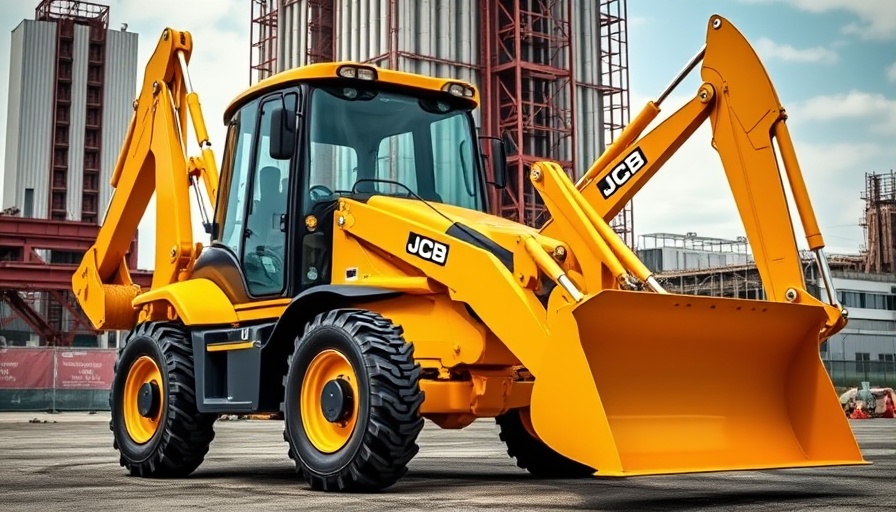
Unveiling JCB's Next-Generation Backhoe Loaders
In a remarkable stride towards innovation, JCB has rolled out its next-generation backhoe loaders, the 3CX Plus and 4CX Pro, crafted to enhance performance and operator experience. As the construction industry continues to evolve, these machines reflect a commitment to combining robust engineering with user-focused designs, essential for today's demanding job sites.
What Sets the 3CX Plus Apart?
At the heart of this evolution is the JCB 3CX Plus, powered by a 109-horsepower 4.4-liter engine that delivers impressive torque of 381 pound-feet at 1,500 revolutions per minute. This power enables the loader to achieve travel speeds of up to 25 mph, allowing operators to quickly move between job sites without sacrificing efficiency. The machine's quick-roading capabilities not only save time but also improve project turnover, a significant boon for contractors looking to maximize productivity.
Enhanced Material Handling with Innovative Features
The 3CX Plus boasts an advanced outer box material handling dipper stick that enhances both weight distribution and grabbing power. This design feature not only provides operators with better control but also allows for more effective material handling, addressing challenges such as heavy lifting and precise placements. The optional thumb further enhances versatility, making it an ideal candidate for a variety of tasks.
Operator-Centric Cab Design
Operating heavy machinery can often be a strenuous task, but the redesigned cab of the 3CX Plus offers an operator-focused environment. Key upgrades include a spacious design with a 7-inch display for easy monitoring, Bluetooth connectivity for hands-free communication, and ergonomic joystick controls for simplified operational management. With lockable storage compartments and enhanced visibility thanks to larger mirrors and LED work lights, the cab design facilitates a more comfortable and safer working day.
Broader Lineup to Meet Diverse Needs
The new lineup includes not only the 3CX Plus but also the 3CX and 4CX Pro models. The 3CX stands out for its low upfront costs, making it a budget-friendly choice for smaller contractors. Meanwhile, the 3CX Pro incorporates performance features from the 3CX Plus but ups the ante with a top speed of 30 mph. The all-wheel-steer JCB 4CX Pro offers superior traction and enhanced loading capabilities, particularly in challenging conditions, showcasing JCB's versatility across its machines.
Industry Insights: Why Innovation Matters
The introduction of JCB's next-generation loaders is not merely about technological advancement; it represents a broader industry trend towards automation and smarter machines. As the construction sector increasingly looks to technology to reduce labor costs and enhance efficiency, these innovations could play a pivotal role in shaping the future landscape. Contractors investing in such machines have the advantage of staying competitive while also improving safety and productivity on sites.
Data-Driven Decisions: The Future of Equipment Investment
Understanding the impact of machinery on operational efficiency is vital for contractors. A study by the Associated General Contractors of America found that investing in advanced construction technology can lead to significantly lower overall project costs. For small to medium-sized contractors concerned about upfront investments, machines like the 3CX and its Pro counterparts offer both value and functionality that can lead to greater overall savings. As the industry shifts towards bigger and better tools, the implications for equipment investment decisions are profound.
Conclusion: What's Next for Contractors?
With JCB paving the way for enhanced construction machinery, contractors should consider the operational benefits these next-generation backhoe loaders provide. Staying updated on equipment advancements can empower contractors to make informed decisions that bolster productivity and profitability. By harnessing modern machinery, contractors can also adapt to evolving job requirements and thrive in a competitive landscape.
To learn more about how JCB's innovative backhoes can enhance your contracting business, subscribe to Equipment World’s channel for the latest insights and updates.
 Add Row
Add Row  Add
Add 




Write A Comment